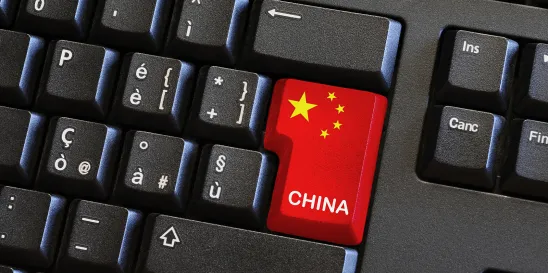Background
On Tuesday, October 17, 2023, the U.S. Bureau of Industry and Security (BIS) released a package of three rules (the 2023 Rules) targeting the Chinese semiconductor industry. The rules update the substantial semiconductor regulations that BIS released a year ago (the 2022 Regulations), reshaping the semiconductor industry and its flows of information and trade between the United States and China.
In its press release, BIS states that the new semiconductor rules are intended to close loopholes and address China’s efforts in obtaining advanced computing chips and semiconductor manufacturing equipment due to advance artificial intelligence (AI) capabilities these chips provide in military applications.
We will work deeper into the 436 pages of regulations to deliver further insights but, for the time being, we provide the summary and brief initial analysis of the regulations below. We note that the Entity List designations and Temporary General License (TGL) are effective immediately, but that the other changes described below generally do not take effect until November 17, 2023. The U.S. Department of Commerce is accepting comments on the proposed rules until December 18, 2023.
Advancing Advanced Chip Controls
The 2022 Regulations created new ECCNs (3×090 and 4×090) to control the movement of the highest performing chips, supercomputers, and the equipment, software, and technology used to produce those items. The 2023 Rules add items to the chip controls at 3A090 to control chips for the operation of the “most powerful data centers” as well as chips for training advanced AI systems. The 2023 Rules also adds a new “performance density threshold” which is designed to prevent exporting a number of lower performing chips to avoid the controls, then combining those chips for the result that the end-user could still exceed the performance thresholds.
You may think, “ah, good, I don’t have any products in that ‘090’ category, so I don’t have to worry.” However, though we would not encourage anyone to worry, we would suggest you at least consider the new “.z” paragraphs that have been added to ECCNs 3A001, 4A003, 4A004, 4A005, 5A002, 5A004, 5A992, 5D002, and 5D992. The “.z” category imposes a control on the items described in that ECCN that also meet or exceed the performance parameters in the correlated 3×090 or 4×090 ECCN.
So yeah, you could have a nice 5A992 chip—low controlled, no license required to most countries—but if it can do what an advanced chip can do, but for some reason doesn’t fall within the specifications of 3A090, it can still be controlled like a 3A090 chip!
Expanding the Export Perimeter
The new Advanced Computing and Supercomputing rules also add provisions designed to prevent the circumvention of the rule. Advanced ICs (those in ECCN 3A090 or with the same performance!) will require a license for export not only to China, but also to any country in groups D:1, D:4, or D:5 (unless the country is also specified in A:5 or A:6). That’s more than 40 countries![1]
We see echoes of this broadened perimeter in restrictions on semiconductor manufacturing equipment. That equipment will also be subject to license requirements for export to the 21 countries in Country Group D:5.
To our understanding, the expansion of the country list for license requirements is a response to the potential for diversion from those countries to China. The rules appear to address a concern that certain countries, may obtain controlled items and surreptitiously reexport them to China or make use of them in-country for the benefit of a Chinese company (particularly parent companies).
Targeting the Chipmaking Equipment – The Manufacturing Rules
The 2023 Rules include a suite of restrictions on semiconductor manufacturing equipment (the Manufacturing Rules). The Manufacturing Rules add new types of manufacturing equipment for semiconductors to the controls in ECCNs 3B090, 3B001, and 3B002. The related controls for technology and software (3D001, 3D002, 3D003, and 3E002) are also amended to correlate with the expansion of the related equipment rules. Further, all of the items added to all of the above categories will be controlled for National Security (NS) and Regional Stability (RS) reasons, requiring licenses for the export of those items to nearly all countries.
The Manufacturing Rules also include a new 0% de minimis rule (the kind we find for 600 series and ITAR items) on specific lithography equipment when it is destined for use in the development or production of “advanced-node integrated circuits.” However, the de minimis rule does not apply where the non-U.S.-made item was originally exported from a country that controls the item on its own export control list.[2]
Oh, “What’s that term,” you ask? Well, this may be the best part of the 2023 Rules. They finally gave us a name for the items we’ve been calling “advanced ICs” or “high performance chips” or “the ones that meet those three chip levels like 16/14 nanometers?” Advanced-Node Integrated Circuits (are we cool to call them ANICs?) is now a defined term including IC’s that meet any of the following criteria:
- Logic ICs using a non-planar transistor architecture or with a “production” ‘technology node’ of 16/14 nanometers or less;
- NOT AND (NAND) memory ICs with 128 layers or more; or
- Dynamic random-access memory (DRAM) ICs using a “production” ‘technology node’ of 18 nanometer half-pitch or less.
So glad we have a name for those. Anyhow . . .
Designating New FN4 Entities
The 2023 Rules designate more than a dozen entities to the U.S. Entity List, subject to a FN4 designation. As you will recall, that designation means that not only may no person export, reexport, or transfer items subject to the EAR to those entities, but that the FN4 Foreign Direct Product Rule will apply. That FN4 FDPR will sweep many non-U.S. items that are the direct product of U.S.-origin software or technology[3] into the EAR control, when those non-U.S. items are for the development or production or even for use in an end item that will be provided to the FN4 entity.
It is, in short, a big prohibition. Interestingly, it appears the designation does not arise from any specific activity supporting the Chinese military, violating human rights, or diverting items to prohibited entities. Rather, BIS has designated the companies because they are “involved in the development of advanced computing integrated circuits (ICs)” and those advanced ICs could be used in weapons or surveillance equipment. Nevertheless, the companies are all subject to the FN4 prohibitions effective on the publication of the 2023 Rules on October 17, 2023.
U.S. Person Activity
The long-time fans of this blog will recall that when the U.S.-person restrictions were issued in the 2022 Regulations, we wrote:
Ok, so here’s the wild part: the EAR place direct restrictions on U.S. person support for the development of any chips if that support goes to a facility that produces advanced semiconductors (or even if you don’t know whether the facility produces advanced semiconductors!). (We note that the new bar for prohibiting the provision of information is so low, it functions almost as an EAR control against the provision of services, which will ring a bell for those familiar with U.S. economic sanctions and embargoes administered by the U.S. Office of Foreign Assets Control).
Although some commentators had the impression that BIS may have stepped onto OFAC territory, it looks like they have claimed this patch of restrictions and continue to expand it.
The restrictions essentially prohibit a U.S. person the involvement in the movement of non-U.S. items that could provide, or support the fabrication of, advanced chips to end users in China, either directly or by diversion through other D:5 countries or Macau.
Generally, a U.S. person must obtain a license for shipping, transmitting, or transferring (in-country); facilitating the shipment, transmission, or transfer (in-country); or servicing (including installation) of the following items:
- Any item not subject to the EAR to or within a D:5 country (or Macau) that you know will be used in the development or production of any ICs at a facility of an entity in or headquartered in (or with a parent headquartered in) a D:5 country (or Macau), if that facility also produces Advanced-Node ICs (ANICs . . . we’re gonna go with ANICs) or that you know will be used in the development or production of ANICs;
- Any item not subject to the EAR and meeting the parameters of any ECCN in Product Groups B, C, D, or E in Category 3 of the CCL to or within a D:5 country (or Macau) that you know will be used in the development or production of any ICs at a facility of an entity in or headquartered in (or with a parent headquartered in) a D:5 country (or Macau), where production of ICs occurs in one of those countries, but you do not know whether production of “advanced-node ICs” occurs at that facility; or
- Any item not subject to the EAR and meeting the parameters of ECCNs 3B001.a.4, c, d, f.1.b, k to p; 3B002.b and c; 3D001 (for 3B001.a.4, c, d, f.1.b, k to p, 3B002.b and c); 3D002 (for 3B001 a.4, c, d, f.1.b, k to p, 3B002.b and c); or 3E001 (for 3B001.a.4, c, d, f.1.b, k to p, 3B002.b and c) to or within a D:5 country (or Macau).
More to Follow
In the coming weeks, we will provide further description, explanation, and analysis as well as any practical guidance that develops, as we, and others across the industry figure out how they will apply in the day-to-day function of the global semiconductor trade. As many of the 2023 Rules are interim final rules, we may see some tweaks in the coming months, and we will almost certainly see subsequent guidance from BIS to clarify certain points. We will, of course, continue to monitor developments and keep you updated.
We welcome your questions and comments at the contact information of the authors.
FOOTNOTES
[1] In fact, the list would include: Afghanistan, Armenia, Azerbaijan, Bahrain, Belarus, Burma, Cambodia, Central African Republic, China, Democratic Republic of Congo, Cuba, Egypt, Eritrea, Georgia, Haiti, Iran, Iraq, Jordan, Kazakhstan, North Korea, Kuwait, Kyrgyzstan, Laos, Lebanon, Libya, Macau, Moldova, Mongolia, Oman, Pakistan, Qatar, Russia, Saudi Arabia, Somalia, Republic of South Sudan, Sudan, Syria, Tajikistan, Turkmenistan, United Arab Emirates, Uzbekistan, Venezuela, Vietnam, Yemen and Zimbabwe . . . so its 45.
[2] This appears to be part of an effort we are calling “Technological Containment” about which we will have an article soon.
[3] . . . or of a plant or major component of a plant, etc. But we have so much to cover here that we will regretfully need to excise some of the details from the main narrative.
Find Episode I here.
Julien Blanquart contributed to this article.








 />i
/>i
